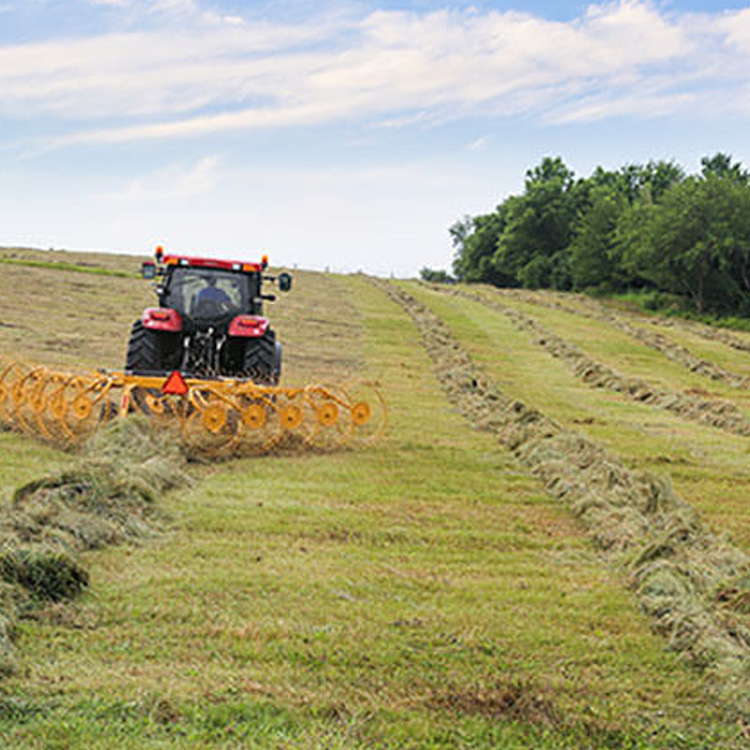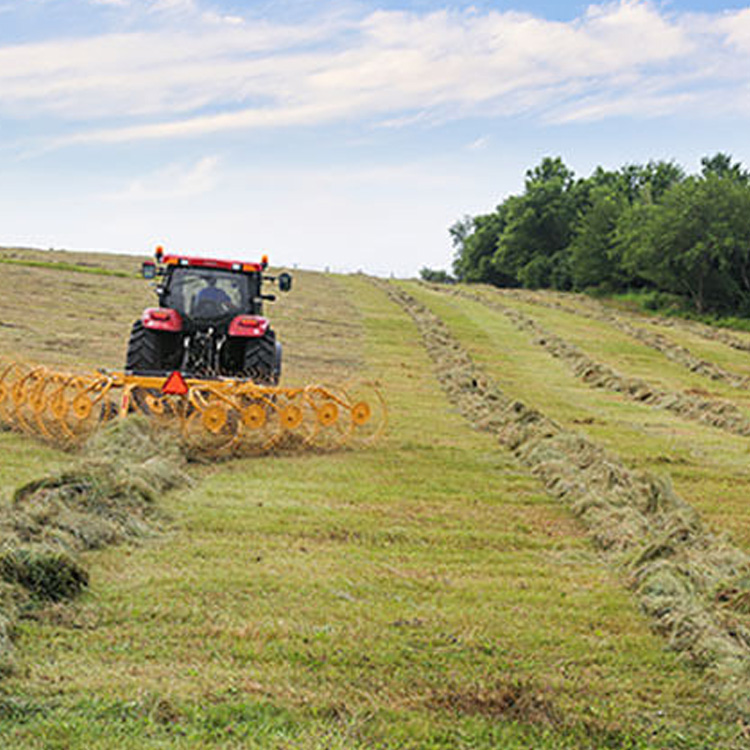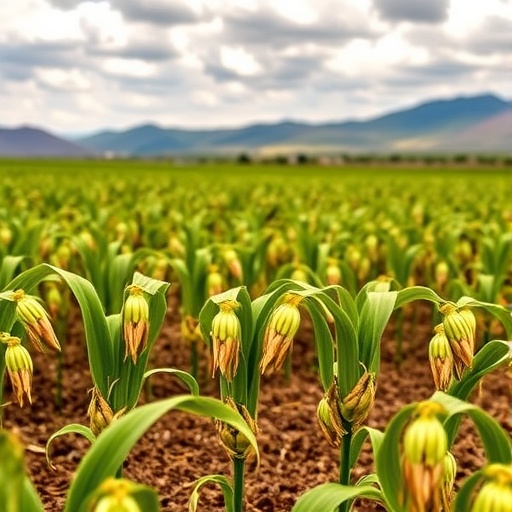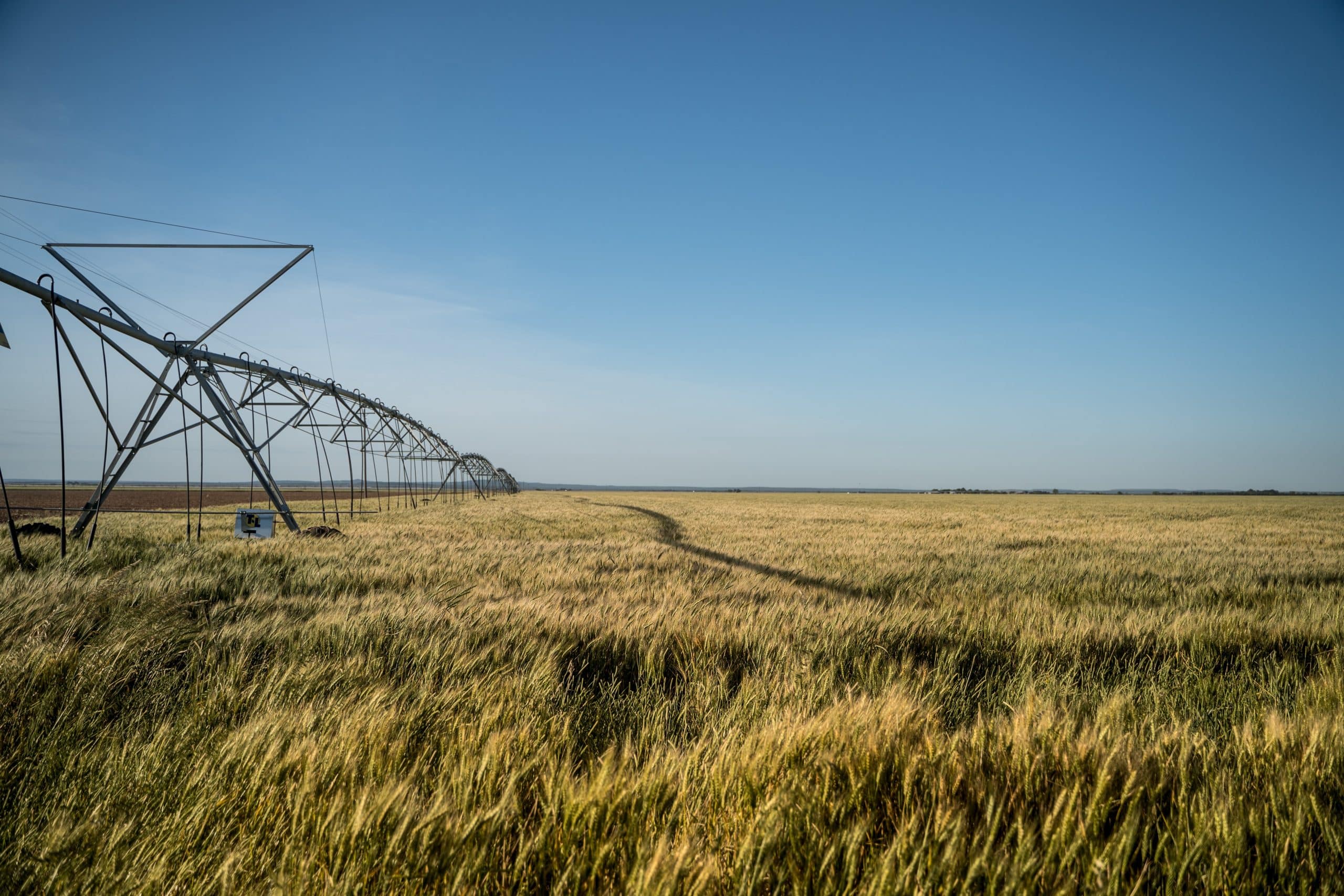Wildfire smoke affects Midwest crops – AgriNews

Report on the Agricultural and Environmental Impacts of Wildfire Smoke in Relation to Sustainable Development Goals
Introduction: A Climate Action Imperative (SDG 13)
Recent atmospheric data indicates that smoke from increasingly frequent and intense wildfires in western North America, a phenomenon linked to climate change, is now affecting the American Midwest. This transboundary air pollution presents a significant challenge to multiple Sustainable Development Goals (SDGs), most notably SDG 13 (Climate Action), as the root cause is tied to escalating climate-related events.
Threats to Food Security and Zero Hunger (SDG 2)
The primary impact of this atmospheric smoke is on regional agriculture, posing a direct threat to food security and the objectives of SDG 2 (Zero Hunger). According to agronomy manager Mark Jeschke, the risk to crop productivity is heightened for agricultural systems already under pressure. “The risk of yield loss and reduced stalk health (from wildfire smoke) is likely greater when smoke imposes an additional stress upon a crop that is already experiencing the effect of other stresses, like disease or drought stress,” Jeschke stated. This vulnerability undermines the stability of food production systems.
Analysis of Complex Effects on Crop Photosynthesis
The interaction between wildfire smoke and crop physiology is multifaceted, influencing photosynthesis through a combination of positive and negative factors. Understanding these effects is crucial for mitigating risks to SDG 2. The key factors include:
- Reduced Sunlight Intensity: Smoke particles reflect incoming solar radiation, diminishing the light available for photosynthesis. This reduction in light energy is potentially detrimental to crop productivity and, consequently, to achieving food security targets.
- Increased Sunlight Diffusion: Conversely, smoke can increase the diffusion of photosynthetically active radiation. This may benefit crops by improving light distribution to lower canopy leaves and enhancing overall light use efficiency.
- Elevated Ozone Concentrations: A significant negative consequence is the formation of ground-level ozone, a harmful pollutant. This directly threatens both agricultural output and human health.
- Impact on SDG 2: Elevated ozone can substantially reduce crop yields. Research indicates that both corn (a monocot) and soybeans (a dicot) are susceptible to yield loss from ozone pollution, with dicot species generally being more vulnerable.
- Impact on SDG 3: Ground-level ozone is also a recognized air pollutant that is damaging to human health, creating a direct conflict with the aims of SDG 3 (Good Health and Well-being).
Broader Implications for Sustainable Development
The issue of wildfire smoke extends beyond immediate agricultural concerns, impacting a wider range of sustainable development objectives.
- SDG 3 (Good Health and Well-being): As noted, the increase in ground-level ozone constitutes a public health risk from air pollution.
- SDG 15 (Life on Land): The smoke adds a significant stressor to terrestrial ecosystems, including managed agricultural lands, compounding the effects of drought and disease. This works against the goal of protecting and restoring life on land.
Future Outlook and Call for Renewed Climate Action
Projections indicate that wildfires in western North America will grow in frequency and intensity in the coming years. This trend underscores the urgent need for robust climate action as outlined in SDG 13. Addressing the root causes of climate change is essential to mitigate the cascading impacts on food security (SDG 2), public health (SDG 3), and terrestrial ecosystems (SDG 15).
1. Which SDGs are addressed or connected to the issues highlighted in the article?
SDG 2: Zero Hunger
- The article directly addresses food production by discussing how wildfire smoke affects vulnerable crops like corn and soybeans, leading to a “risk of yield loss.” This connects to the goal of ending hunger and ensuring food security.
SDG 3: Good Health and Well-being
- The text explicitly states that “Ground-level ozone is a damaging air pollutant that is harmful to human health,” linking the environmental effects of wildfires to human health outcomes.
SDG 11: Sustainable Cities and Communities
- The article discusses widespread air pollution, noting that smoke from wildfires in the western U.S. and Canada “has made its way to the Midwest.” This issue of transboundary air quality affects the environment of cities and communities far from the source.
SDG 13: Climate Action
- The article links the core problem to climate change, stating that “Wildfires in western North America are expected to become more frequent and intense in the years ahead.” This highlights the need to address climate change and its impacts, such as these natural disasters.
SDG 15: Life on Land
- The article’s subject, wildfires, is a direct threat to terrestrial ecosystems. The impact on agricultural land, through “reduced stalk health” and potential yield loss, represents a form of land degradation affecting ecosystems managed for food production.
2. What specific targets under those SDGs can be identified based on the article’s content?
- Target 2.4: By 2030, ensure sustainable food production systems and implement resilient agricultural practices that increase productivity and production… and strengthen capacity for adaptation to climate change, extreme weather, drought… and other disasters.
- The article discusses how wildfire smoke, an effect of a climate-related disaster, imposes “an additional stress upon a crop that is already experiencing the effect other stresses, like disease or drought stress,” directly relating to the need for resilient agriculture.
- Target 3.9: By 2030, substantially reduce the number of deaths and illnesses from hazardous chemicals and air, water and soil pollution and contamination.
- The identification of ground-level ozone as a “damaging air pollutant that is harmful to human health” directly aligns with this target’s focus on reducing harm from air pollution.
- Target 11.6: By 2030, reduce the adverse per capita environmental impact of cities, including by paying special attention to air quality.
- The article’s focus on the effects of smoke and “elevated ozone concentrations” on a large region like the Midwest is a clear issue of air quality, which is a key component of this target.
- Target 13.1: Strengthen resilience and adaptive capacity to climate-related hazards and natural disasters in all countries.
- The article points to the increasing frequency and intensity of wildfires as a future concern, which is a climate-related hazard. The discussion of its impact on crops highlights the need for agricultural systems to adapt to these events.
- Target 15.3: By 2030, combat desertification, restore degraded land and soil… and strive to achieve a land degradation-neutral world.
- The impact of smoke and ozone, which “significantly reduce crop yields,” can be considered a form of agricultural land degradation, as it reduces the land’s productive capacity.
3. Are there any indicators mentioned or implied in the article that can be used to measure progress towards the identified targets?
- Crop Yield Loss: The article repeatedly mentions the “risk of yield loss” and that elevated ozone has the “potential to significantly reduce crop yields.” This serves as a direct indicator for Target 2.4, measuring agricultural productivity.
- Concentration of Ground-Level Ozone: The text identifies “elevated ozone concentrations” as a key factor harming both plants and humans. Measuring ozone levels is a direct indicator for air quality (Targets 3.9 and 11.6).
- Frequency and Intensity of Wildfires: The article states that wildfires “are expected to become more frequent and intense.” Tracking this trend is an indicator of the severity of climate-related hazards (Target 13.1).
- Crop Health Metrics: The mention of “reduced stalk health” implies that the physical condition of crops can be measured as an indicator of environmental stress and land productivity, relevant to Target 15.3.
4. Table of SDGs, Targets, and Indicators
| SDGs | Targets | Indicators (Implied or Mentioned in Article) |
|---|---|---|
| SDG 2: Zero Hunger | 2.4: Ensure sustainable food production systems and resilient agricultural practices. | Crop yield loss in corn and soybeans. |
| SDG 3: Good Health and Well-being | 3.9: Substantially reduce illnesses from air pollution. | Concentration of ground-level ozone. |
| SDG 11: Sustainable Cities and Communities | 11.6: Reduce the adverse environmental impact of cities, paying attention to air quality. | Concentration of ground-level ozone and presence of wildfire smoke. |
| SDG 13: Climate Action | 13.1: Strengthen resilience and adaptive capacity to climate-related hazards. | Frequency and intensity of wildfires. |
| SDG 15: Life on Land | 15.3: Combat land degradation. | Reduced stalk health and crop productivity on agricultural land. |
Source: agrinews-pubs.com

What is Your Reaction?
 Like
0
Like
0
 Dislike
0
Dislike
0
 Love
0
Love
0
 Funny
0
Funny
0
 Angry
0
Angry
0
 Sad
0
Sad
0
 Wow
0
Wow
0














































































